Sabinene: A New Green Solvent Used in the Synthesis of Thiazolo[5,4-b]pyridines by Thermal or Microwave Activation
Abstract
:1. Introduction
2. Results and Discussion
2.1. Thiazolo-Pyridine Synthesis in Various Standard and Green Solvents
2.1.1. Optimisation in Various Solvents
2.1.2. Optimisation in Green Solvents
2.2. Optimisation of Thiazolo-Pyridine Synthesis in Sabinene
Under Microwave Irradiation and Thermal Conditions
3. Materials and Methods
3.1. General Information
3.2. General Procedure (1)
3.3. General Procedure (2)
3.4. General Procedure (3)



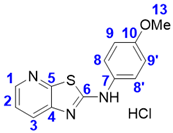

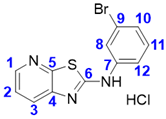


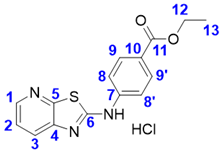


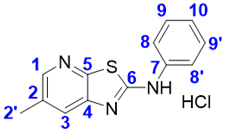
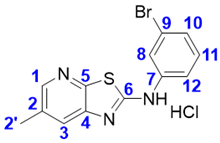
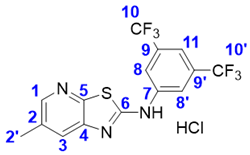
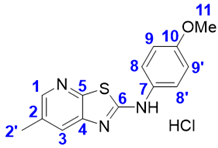
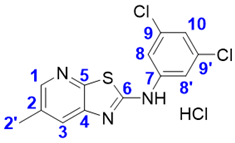
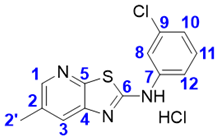

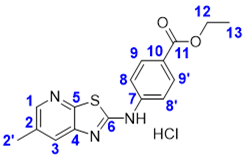

4. Conclusions
Supplementary Materials
Author Contributions
Funding
Institutional Review Board Statement
Informed Consent Statement
Data Availability Statement
Acknowledgments
Conflicts of Interest
Sample Availability
References
- Campos, J.F.; Scherrmann, M.-C.; Berteina-Raboin, S. Eucalyptol: A new solvent for the synthesis of heterocycles containing oxygen, sulfur and nitrogen. Green Chem. 2019, 21, 1531–1539. [Google Scholar] [CrossRef]
- Campos, J.F.; Berteina-Raboin, S. Eucalyptol, an all-purpose product. Catalysts 2022, 12, 48. [Google Scholar] [CrossRef]
- Campos, J.F.; Berteina-Raboin, S. Eucalyptol as bio-based solvent for Migita–Kosugi–Stille coupling reaction on O,S,N-heterocycles. Catal. Today 2020, 358, 138–142. [Google Scholar] [CrossRef]
- Campos, J.F.; Berteina-Raboin, S. Eucalyptol as a Bio-Based Solvent for Buchwald-Hartwig Reaction on O,S,N-Heterocycles. Catalysts 2019, 9, 840. [Google Scholar] [CrossRef]
- Campos, J.F.; Ferreira, V.; Berteina-Raboin, S. Eucalyptol: A bio-based solvent for the synthesis of O,S,N-Heterocycles. Application to Hiyama Coupling, Cyanation, and Multicomponent Reactions. Catalysts 2021, 11, 222. [Google Scholar] [CrossRef]
- Valente, J.; Zuzarte, M.; Gonçalves, M.J.; Lopes, M.C.; Cavaleiro, C.; Salgueiro, L.; Cruz, M.T. Antifungal, antioxidant and anti-inflammatory activities of Oenanthe crocata L. essential oil. Food Chem. Toxicol. 2013, 62, 349–354. [Google Scholar] [CrossRef]
- Yamasaki, Y.; Kunoh, H.; Yamamoto, H.; Akimitsu, K. Biological roles of monoterpene volatiles derived from rough lemon (Citrus Jambhiri Lush) in citrus defense. J. Gen. Plant. Pathol. 2007, 73, 168–179. [Google Scholar] [CrossRef]
- Asili, J.; Emami, A.; Rahimizadeh, M.; Fazli-Bazzaz, B.S.; Hassanzadeh, M. Chemical and Antimicrobial Studies of Juniperus Sabina L. and Juniperus foetidissima Willd. Essential Oils. J. Essent. Oil Bear. Plants 2013, 13, 25–36. [Google Scholar] [CrossRef]
- Sacchetti, G.; Maietti, S.; Muzzoli, M.; Scaglianti, M.; Manfredini, S.; Radice, M.; Bruni, R. Comparative evaluation of 11 essential oils of different origin as functional antioxidants, antiradicals and antimicrobials in foods. Food Chem. 2005, 91, 621–632. [Google Scholar] [CrossRef]
- Cao, Y.; Zhang, H.; Liu, H.; Liu, W.; Zhang, R.; Xian, M.; Liu, H. Biosynthesis and Production of Sabinene: Current State and Perspectives. Appl. Microbiol. Biotechnol. 2018, 102, 1535–1544. [Google Scholar] [CrossRef] [PubMed]
- Abdel-Kader, M.S.; Soliman, G.A.; Alqarni, M.H.; Hamad, M.A.; Foudah, A.I.; Alqasoumi, S.I. Chemical composition and protective effect of Juniperus sabina L. essential oil against CCl4 induced hepatotoxicity. Saudi Pharm. J. 2019, 27, 945–951. [Google Scholar] [CrossRef]
- Verma, R.S.; Padalia, R.C.; Chauhan, A.; Verma, R.K.; Ur Rahman, L.; Singh, A. Changes in the Essential Oil Composition of Origanum majorana L. during Post Harvest Drying. J. Essent. Oil-Bear. Plants 2016, 19, 1547–1552. [Google Scholar] [CrossRef]
- Dallali, S.; Zouaoui, R.; Dallali, D.; Jdidi, S.; Toumi, L. Determination of some biochemical parameters from leaves of Quercus ilex L.(Fagaceae), collected in Djabel Zagouan (Tunisia). Arab. J. Med. Aromat. Plants 2021, 7, 1–28. [Google Scholar]
- Jirovetz, L.; Buchbauer, G.; Stoyanova, A.; Metodiev, S. Seasonal Depending Variations of the Composition and Biological Activities of Douglas Fir (Pseudotsuga menziesii) Essential Oils from Bulgaria. Sci. Pharm. 2000, 68, 323–328. [Google Scholar] [CrossRef]
- Snoussi, M.; Noumi, E.; Trabelsi, N.; Flamini, G.; Papetti, A.; De Feo, V. Mentha spicata Essential Oil: Chemical Composition, Antioxidant and Antibacterial Activities against Planktonic and Biofilm Cultures of Vibrio spp. Strains. Molecules 2015, 20, 14402–14424. [Google Scholar] [CrossRef]
- Fraternale, D.; Flamini, G.; Ricci, D. Essential oil composition and antimicrobial activity of Angelica archangelica L. (Apiaceae) roots. J. Med. Food 2014, 17, 1043–1047. [Google Scholar] [CrossRef]
- ul Haq Wani, R.; Prasad, K. Nutritional and processing aspects of carrot (Daucus carota)—A review. SAJFTE 2015, 1, 1–14. [Google Scholar] [CrossRef]
- Oliveira, G.L.; Moreira, D.L.; Mendes, A.D.R.; Guimaraes, E.F.; Figueiredo, L.S.; Kaplan, M.A.C.; Martins, E.R. Growth study and essential oil analysis of Piper aduncum from two sites of Cerrado biome of Minas Gerais State, Brazil. Rev. Bras. Farmacogn. 2013, 23, 743–753. [Google Scholar] [CrossRef]
- Omara, T.; Kiprop, A.K.; Kosgei, V.J.; Kagoya, S. Clausena anisata (Willd.) Hook.f. ex Benth. (Rutaceae): Ethnomedicinal uses, phytochemistry, pharmacological activities, toxicity, and clinical application. Tradit. Med. Res. 2022, 7, 51–74. [Google Scholar] [CrossRef]
- Renninger, N.S.; Ryder, J.A.; Fisher, K.J. Jet Fuel Compositions and Methods of Making and Using Same. U.S. Patent 7942940, 20 November 2007. [Google Scholar]
- Peralta-Yahya, P.P.; Ouellet, M.; Chan, R.; Mukhopadhyay, A.; Keasling, J.D.; Lee, T.S. Identification and microbial production of a terpene-based advanced biofuel. Nat. Commun. 2011, 2, 483. [Google Scholar] [CrossRef]
- Balaban, A.T. Aromaticity as a Cornerstone of Heterocyclic Chemistry. Chem. Rev. 2004, 104, 2777–2812. [Google Scholar] [CrossRef]
- Scott, K.A.; Njardarson, J.T. Analysis of US FDA-Approved Drugs Containing Sulfur Atoms. Top. Curr. Chem. 2018, 376, 5. [Google Scholar] [CrossRef] [PubMed]
- Chhabria, M.T.; Patel, S.; Modi, P.; Brahmkshatriya, P.S. Thiazole: A Review on Chemistry, Synthesis and Therapeutic Importance of its Derivatives. Curr. Top. Med. Chem. 2016, 16, 2841–2862. [Google Scholar] [CrossRef]
- Vitaku, E.; Smith, D.T.; Njardarson, J.T. Analysis of the structural diversity, substitution patterns, and frequency of nitrogen heterocycles among U.S. FDA approved pharmaceuticals. J. Med. Chem. 2014, 57, 10257–10274. [Google Scholar] [CrossRef] [PubMed]
- Taylor, R.D.; MacCoss, M.; Lawson, A.D.G. Rings in Drugs. J. Med. Chem. 2014, 57, 5845–5859. [Google Scholar] [CrossRef] [PubMed]
- Kabir, E.; Uzzaman, M. A review on biological and medicinal impact of heterocyclic compounds. Results Chem. 2022, 4, 100606. [Google Scholar] [CrossRef]
- Kerru, N.; Gummidi, L.; Maddila, S.; Gangu, K.K.; Jonnalagadda, S.B. A Review on Recent Advances in Nitrogen-Containing Molecules and Their Biological Applications. Molecules 2020, 25, 1909. [Google Scholar] [CrossRef]
- Gibson, S.; McGuire, R.; Rees, D.C. Principal Components Describing Biological Activities and Molecular Diversity of Heterocyclic Aromatic Ring Fragments. J. Med. Chem. 1996, 39, 4065–4072. [Google Scholar] [CrossRef]
- Kalaria, P.N.; Karad, S.C.; Raval, D.K. A Review on Diverse Heterocyclic Compounds as the Privileged Scaffolds in Antimalarial Drug Discovery. Eur. J. Med. Chem. 2018, 5, 917–936. [Google Scholar] [CrossRef]
- Taylor, A.P.; Robinson, R.P.; Fobian, Y.M.; Blakemore, D.C.; Jones, L.H.; Fadeyi, O. Modern Advances in Heterocyclic Chemistry in Drug Discovery. Org. Biomol. Chem. 2016, 14, 6611–6637. [Google Scholar] [CrossRef]
- Cee, V.J.; Frohn, M.; Lanman, B.A.; Golden, J.; Muller, K.; Neira, S.; Pickrell, A.; Arnett, H.; Buys, J.; Gore, A.; et al. Discovery of AMG 369, a Thiazolo[5,4-b]pyridine Agonist of S1P1 and S1P5. ACS Med. Chem. Lett. 2011, 2, 107–112. [Google Scholar] [CrossRef] [PubMed]
- Rao, A.U.; Palani, A.; Chen, X.; Huang, Y.; Aslanian, R.G.; West, R.E., Jr.; Williams, S.M.; Wu, R.; Hwa, J.; Sondey, C.; et al. Synthesis and Structure–activity Relationships of 2-(1,4′-bipiperidin-1′-yl)thiazolopyridine as H3 Receptor Antagonists. Bioorg. Med. Chem. Lett. 2009, 19, 6176–6180. [Google Scholar] [CrossRef] [PubMed]
- Kale, M.G.; Raichurkar, A.; Hameed, P.S.; Waterson, D.; McKinney, D.; Manjunatha, M.R.; Kranthi, U.; Koushik, K.; Jena, L.K.; Shinde, V.; et al. Thiazolopyridine Ureas as Novel Antitubercular Agents Acting through Inhibition of DNA Gyrase, B.J. Med. Chem. 2013, 56, 8834–8848. [Google Scholar] [CrossRef] [PubMed]
- Xie, X.; Li, H.; Wang, J.; Mao, S.; Xin, M.; Lu, S.; Mei, Q.; Zhang, S. Synthesis and Anticancer Effects Evaluation of 1-alkyl-3-(6-(2-methoxy-3-sulfonylaminopyridin-5-yl)benzo[d]thiazol-2-yl)urea as Anticancer Agents with Low Toxicity. Bioorg. Med. Chem. 2015, 23, 6477–6485. [Google Scholar] [CrossRef] [PubMed]
- Bebernitz, G.R.; Beaulieu, V.; Dale, B.A.; Deacon, R.; Duttaroy, A.; Gao, J.; Grondine, M.S.; Gupta, R.C.; Kakmak, M.; Kavana, M.; et al. Investigation of Functionally Liver Selective Glucokinase Activators for the Treatment of Type 2 Diabetes. J. Med. Chem. 2009, 52, 6142–6152. [Google Scholar] [CrossRef] [PubMed]
- Xia, L.; Zhang, Y.; Zhang, J.; Lin, S.; Zhang, K.; Tian, H.; Dong, Y.; Xu, H. Identification of Novel Thiazolo[5,4-b]Pyridine Derivatives as Potent Phosphoinositide 3-Kinase Inhibitors. Molecules 2020, 25, 4630. [Google Scholar] [CrossRef] [PubMed]
- Liu, P.; Cheng, H.; Roberts, T.M.; Zhao, J.J. Targeting the Phosphoinositide 3-kinase Pathway in Cancer. Nat. Rev. Drug Discov. 2009, 8, 627–644. [Google Scholar] [CrossRef]
- Sahasrabudhe, K.P.; Angels Estiarte, M.; Tan, D.; Zipfel, S.; Cox, M.; O’Mahony, D.J.R.; Edwards, W.T.; Duncton, M.A.J. A single-step preparation of thiazolo[5,4-b]pyridine- and thiazolo[5,4-c]pyridine derivatives from chloronitropyridines and thioamides, or thioureas. J. Heterocycl. Chem. 2009, 46, 1125–1131. [Google Scholar] [CrossRef]
- Jemili, R.; Campos, J.F.; Dumuis, N.; Rabat, H.; Semmar, N.; Berteina-Raboin, S. Laser Synthesis: A Solvent-Free Approach for the Preparation of Phenylthiazolo[5,4-b]Pyridine Derivatives. RSC Adv. 2021, 11, 5003–5007. [Google Scholar] [CrossRef]
- Atland, H.W.; Molander, G.A. A facile synthesis of 2-aminothiazolo[5,4-b] and 2-aminothiazolo[4,5-c]pyridines. J. Heterocycl. Chem. 1977, 14, 129–134. [Google Scholar] [CrossRef]
- Fînaru, A.; Berthault, A.; Besson, T.; Guillaumet, G.; Berteina-Raboin, S. Microwave-Assisted Solid-Phase Synthesis of 5-Carboxamido-N-acetyltryptamine Derivatives. Org. Lett. 2002, 4, 2613–2615. [Google Scholar] [CrossRef] [PubMed]
- Xu, D.; Xu, X.; Liu, Z.; Sun, L.-P.; You, Q. A general and efficient synthesis of 2-substituted Oxazolopyridines. Synlett 2009, 7, 1172–1174. [Google Scholar] [CrossRef]
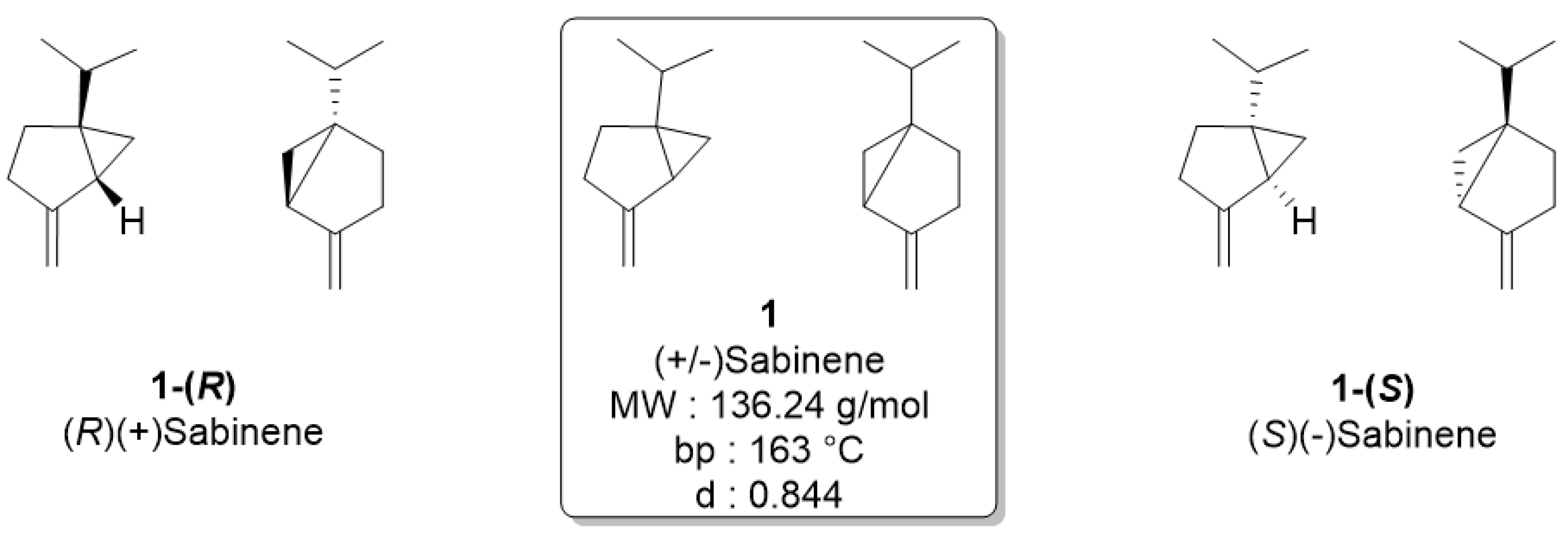

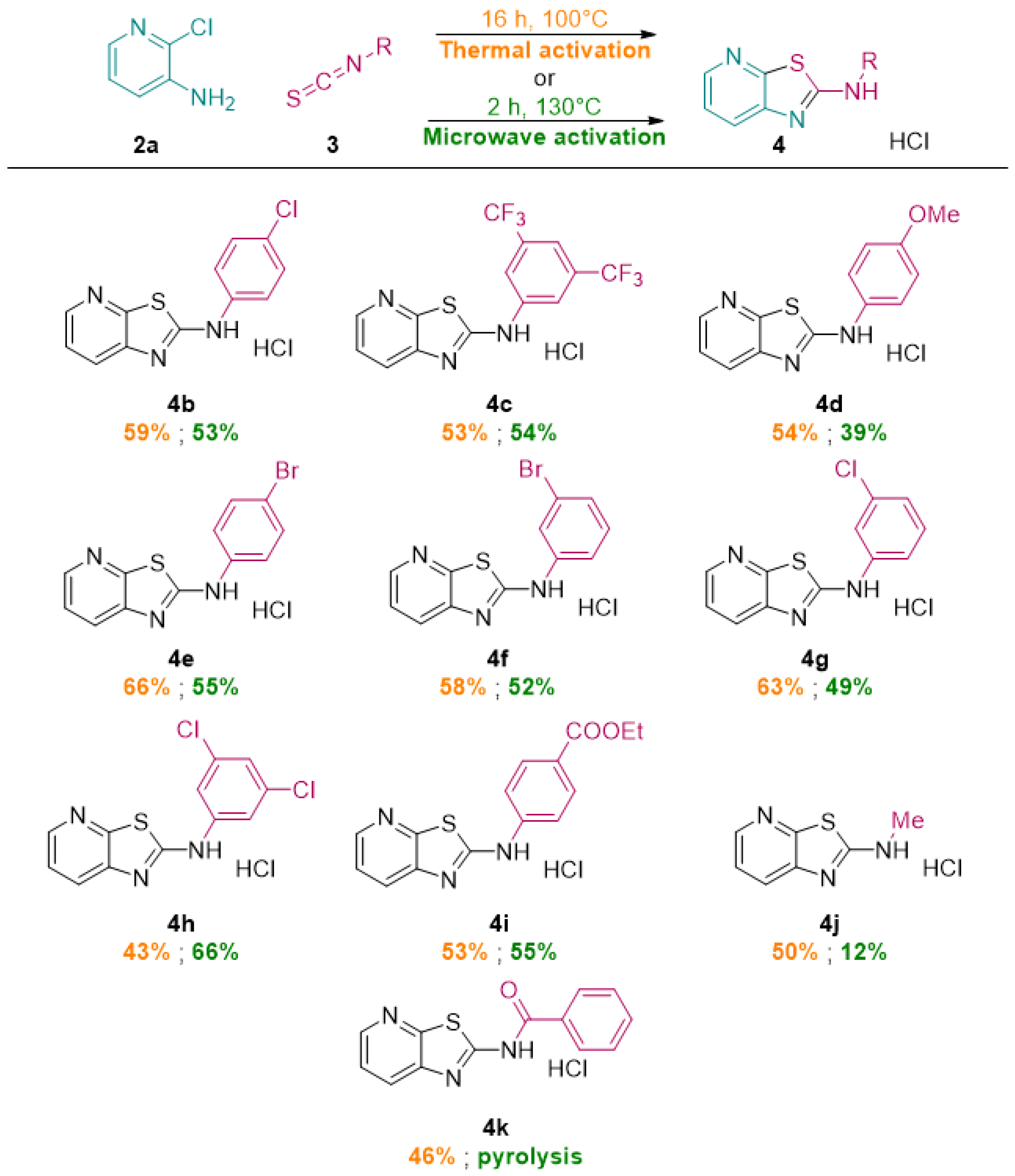
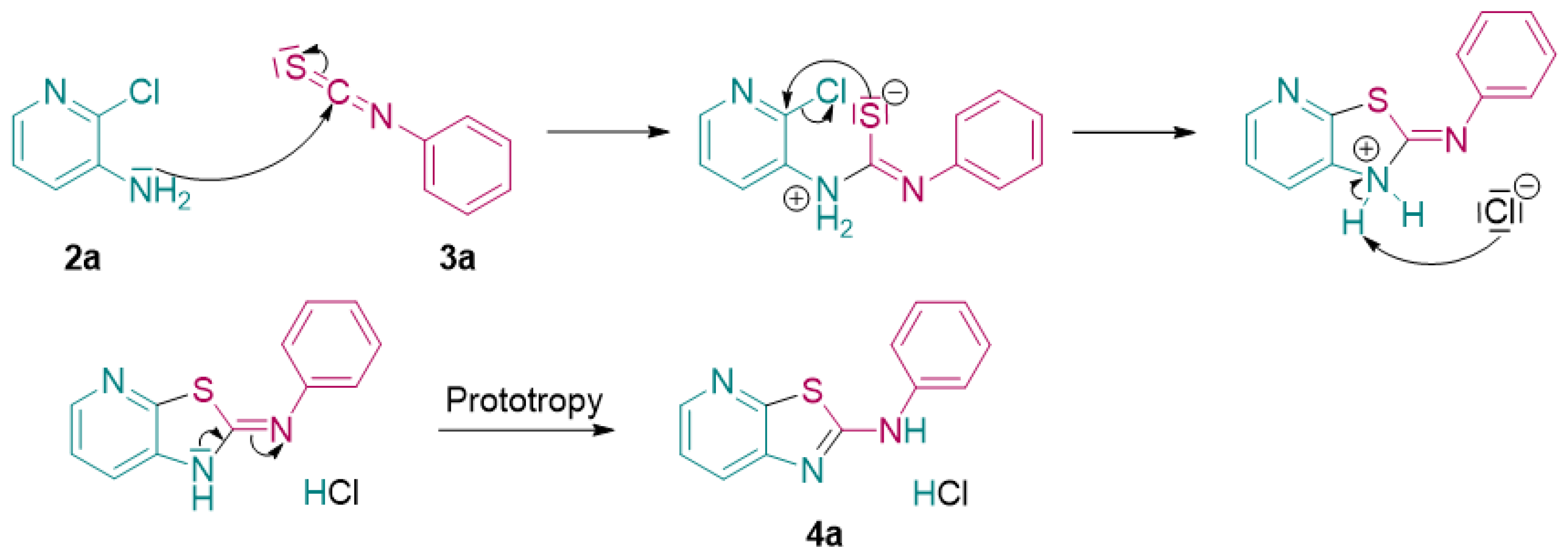
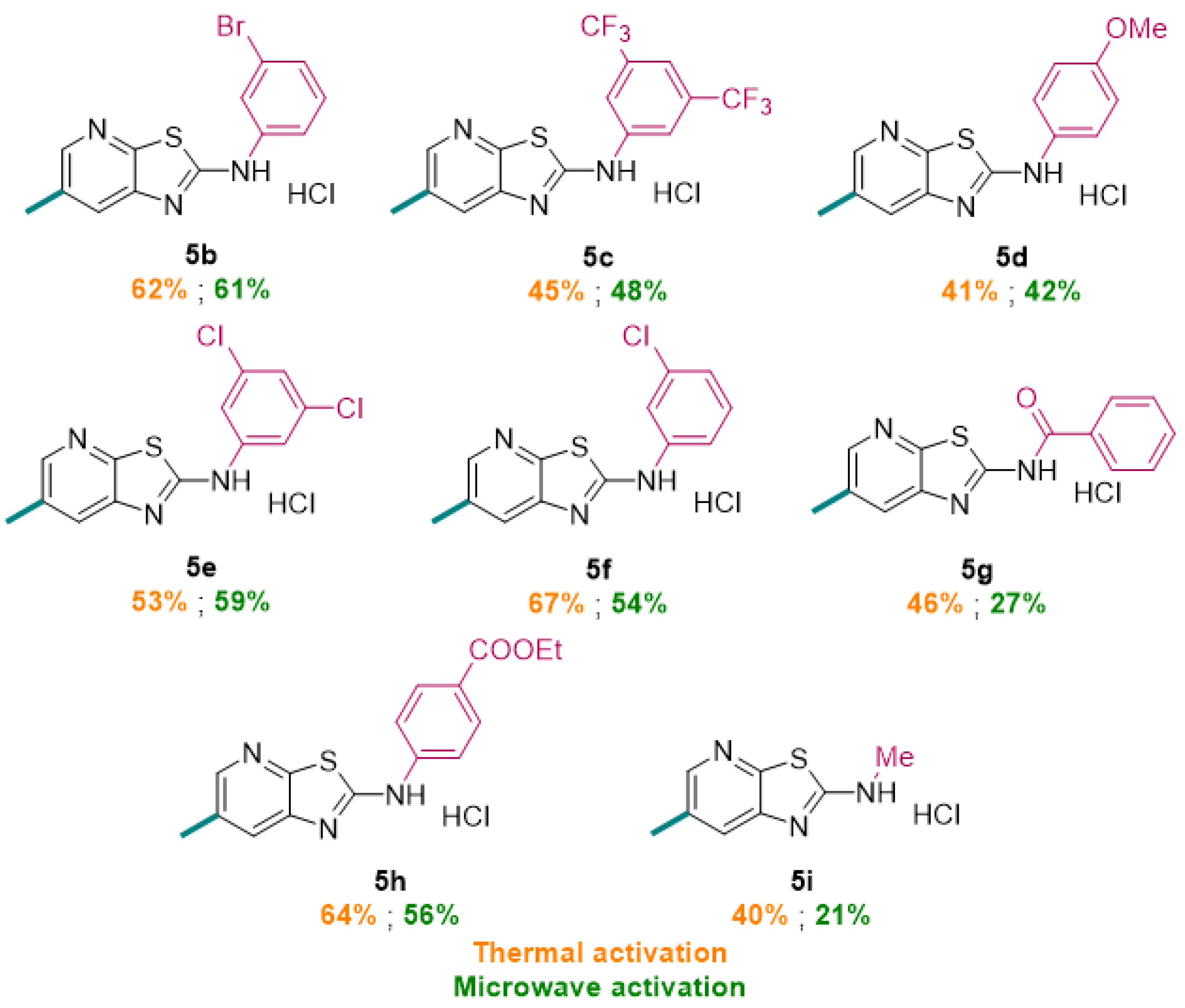

 | ||||
|---|---|---|---|---|
| Entry | Solvent | T (°C) | Time (h) | Yield (%) |
| 1 | Acetone | 100 | 4 | 60 |
| 2 | DCM | 100 | 4 | 43 |
| 3 | Toluene | 100 | 4 | 44 |
| 4 | Dioxane | 100 | 4 | 44 |
| 5 | THF | 100 | 4 | 43 |
| 6 | Eucalyptol | 100 | 4 | 59 |
| 7 | Eucalyptol | 100 | 16 | 75 |
| 8 | CPME | 100 | 4 | 63 |
| 9 | CPME | 100 | 16 | 71 |
| 10 | Sabinene | 100 | 4 | 36 |
| 11 | Sabinene | 100 | 16 | 58 |
| 12 | Limonene | 100 | 4 | 65 |
| 13 | Limonene | 100 | 16 | 70 |
| 14 | Citral | 100 | 16 | 21 |
 | ||||||
|---|---|---|---|---|---|---|
| Entry | 2-chloro-3-amino-pyridine (Equiv.) | Isothiocyanate (Equiv.) | Reaction Time (h) | TP (°C) | Solvent | Yields |
| 1 | 1 | 1 | 4 | 100 | Eucalyptol | 59% |
| 2 | 1 | 1 | 16 | 100 | Eucalyptol | 75% |
| 3 | 1 | 1 | 4 | 100 | CPME | 63% |
| 4 | 1 | 1 | 16 | 100 | CPME | 71% |
| 5 | 1.1 | 1 | 16 | 100 | CPME | 79% |
| 6 | 1 | 1 | 4 | 100 | Limonene | 65% |
| 7 | 1 | 1 | 16 | 100 | Limonene | 70% |
| 8 | 1 | 1 | 4 | 100 | Sabinene | 36% |
| 9 | 1.1 | 1 | 4 | 100 | Sabinene | 38% |
| 10 | 1 | 1.1 | 4 | 100 | Sabinene | 33% |
| 11 | 1 | 1 | 16 | 100 | Sabinene | 68% |
| 12 | 1.1 | 1 | 16 | 100 | Sabinene | 76% |
| 13 | 1.1 | 1 | 16 | 100 | Distilled Sabinene | 62% |
| 14 | 1 | 1 | 16 | 100 | Distilled Sabinene | 58% |
| Entry | Reaction Time | Temperature (°C) | Yield (%) | Solvant |
|---|---|---|---|---|
| 1 | 1 h | 160 | 67 | Sabinene |
| 2 | 2 h | 150 | 59 | |
| 3 | 2 h | 130 | 55 | |
| 4 | 4 h | 130 | 62 | |
| 5 | 2 h | 130 | 44 | 75:25 Sabinene/Ethanol |
| 6 | 2 h | 130 | 64 | 75:25 Sabinene/ACN |
 | ||||||
|---|---|---|---|---|---|---|
| Entry | Reaction Time | Pyridine (Equiv.) | Isothiocyanate (Equiv.) | Rinsing Solvent | Yield | NMR Observation |
| 1 | 5 h | 1 | 1 | Diethyl ether | 46% | Clear |
| 2 | 5 h | 1.1 | 1 | Diethyl ether | 55% | Parasite peak |
| 3 | 5 h | 1 | 1.1 | Diethyl ether | 53% | Parasite peak |
| 4 | 16 h | 1.1 | 1 | Diethyl ether | 75% | Parasite peak |
| 5 | 16 h | 1.1 | 1 | Ethyl acetate | 66% | Clear |
 | |||
|---|---|---|---|
| Entry | Reaction Time | Temperature | Yield |
| 1 | 30 min | 150 °C | 40% |
| 2 | 1 h | 150 °C | 61% |
| 3 | 1 h | 160 °C | 57% |
| 4 | 2 h | 150 °C | 63% |
| 6 | 2 h | 110 °C | 37% |
| 7 | 2 h | 130 °C | 64% |
| 8 | 1 h | 130 °C | 50% |
Disclaimer/Publisher’s Note: The statements, opinions and data contained in all publications are solely those of the individual author(s) and contributor(s) and not of MDPI and/or the editor(s). MDPI and/or the editor(s) disclaim responsibility for any injury to people or property resulting from any ideas, methods, instructions or products referred to in the content. |
© 2023 by the authors. Licensee MDPI, Basel, Switzerland. This article is an open access article distributed under the terms and conditions of the Creative Commons Attribution (CC BY) license (https://creativecommons.org/licenses/by/4.0/).
Share and Cite
Messire, G.; Ferreira, V.; Caillet, E.; Bodin, L.; Auville, A.; Berteina-Raboin, S. Sabinene: A New Green Solvent Used in the Synthesis of Thiazolo[5,4-b]pyridines by Thermal or Microwave Activation. Molecules 2023, 28, 6924. https://doi.org/10.3390/molecules28196924
Messire G, Ferreira V, Caillet E, Bodin L, Auville A, Berteina-Raboin S. Sabinene: A New Green Solvent Used in the Synthesis of Thiazolo[5,4-b]pyridines by Thermal or Microwave Activation. Molecules. 2023; 28(19):6924. https://doi.org/10.3390/molecules28196924
Chicago/Turabian StyleMessire, Gatien, Véronique Ferreira, Emma Caillet, Lyana Bodin, Amélia Auville, and Sabine Berteina-Raboin. 2023. "Sabinene: A New Green Solvent Used in the Synthesis of Thiazolo[5,4-b]pyridines by Thermal or Microwave Activation" Molecules 28, no. 19: 6924. https://doi.org/10.3390/molecules28196924
APA StyleMessire, G., Ferreira, V., Caillet, E., Bodin, L., Auville, A., & Berteina-Raboin, S. (2023). Sabinene: A New Green Solvent Used in the Synthesis of Thiazolo[5,4-b]pyridines by Thermal or Microwave Activation. Molecules, 28(19), 6924. https://doi.org/10.3390/molecules28196924







